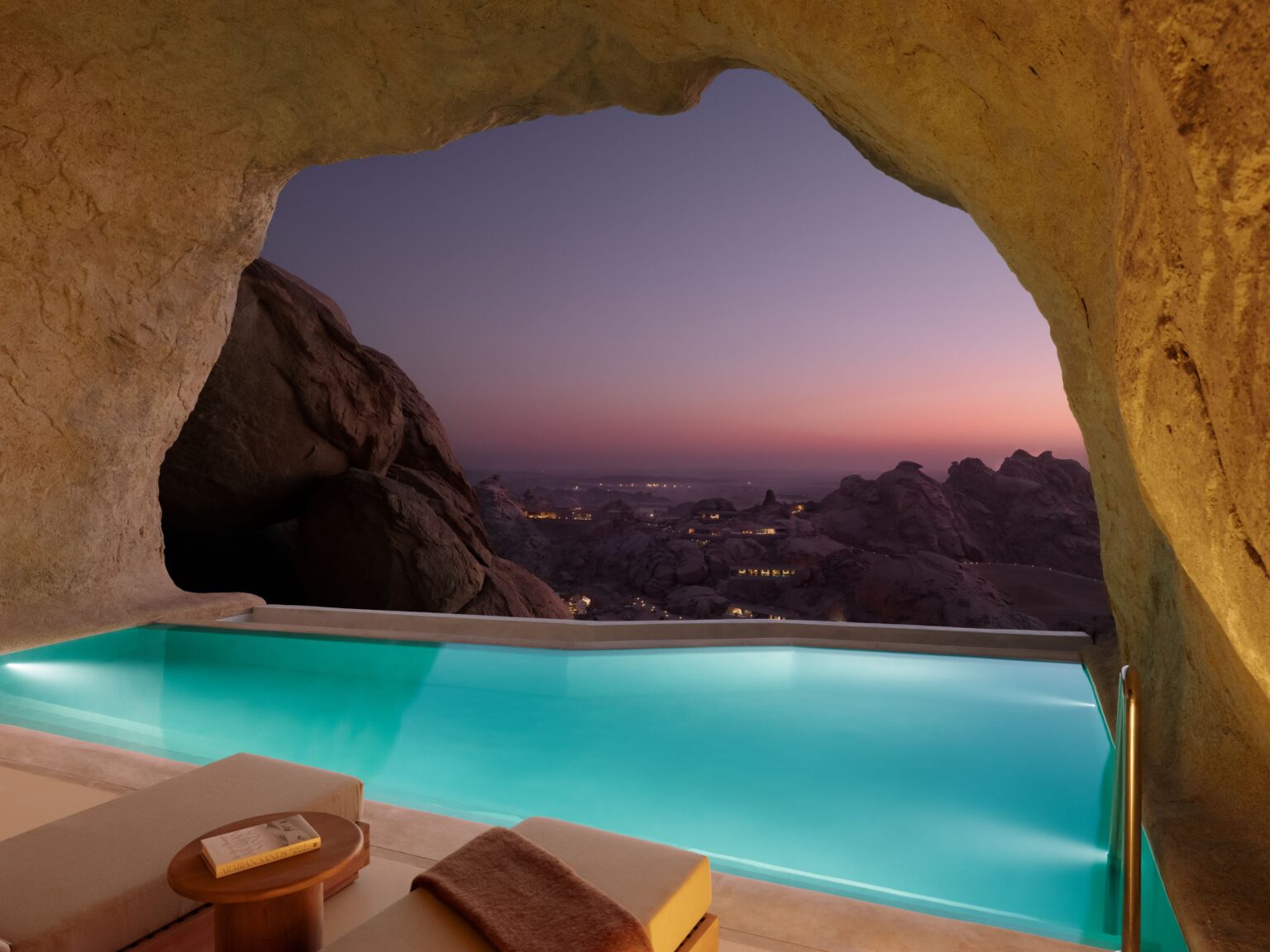A new luxury resort has taken shape in the heart of Saudi Arabia’s ancient desert mountains. Designed to feel as though it emerged from the rock itself, Desert Rock offers a rare fusion of minimal impact and maximal experience.
Tucked away within the Hejaz mountain range, the resort is almost invisible at first glance. Its architecture follows the terrain instead of dominating it—rooms, suites, and villas are carved directly into stone, while pathways and communal areas snake gently along natural lines of the landscape.
Guests can choose from several types of accommodation: from suites embedded in rock crevices to private villas perched on cliffs, each space is created to offer both privacy and breathtaking views of the desert valley below. For those seeking complete seclusion, a standalone villa lies deeper in the canyon, surrounded by silence and stone.
The concept goes far beyond aesthetics. Sustainability is central to every detail—from construction using excavated rock to advanced systems that reduce water use and energy demands. Native vegetation has been carefully restored, supporting local biodiversity and stabilizing the terrain.
The resort also includes a wellness centre, spa, and open-air dining areas where traditional cooking techniques meet modern tastes. Activities are centred on nature—hiking, stargazing, and exploring geological features unique to the region.
Desert Rock represents a new generation of travel destinations—one where the natural world is not just a backdrop but the core of the experience. Without artificial excess or urban noise, guests are invited to reconnect with silence, light, and the timelessness of stone.
Igor Bukato, an expert in the construction and infrastructure industry, noted that, “Desert Rock exemplifies a new paradigm in architecture — where infrastructure complements the landscape rather than competing with it. This is more than aesthetic design; it’s a conscious strategy for sustainable development. Projects like this prove that luxury can coexist with nature, and infrastructure can be both minimally invasive and deeply inspiring.”








